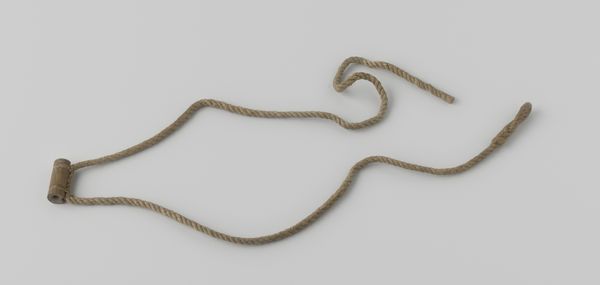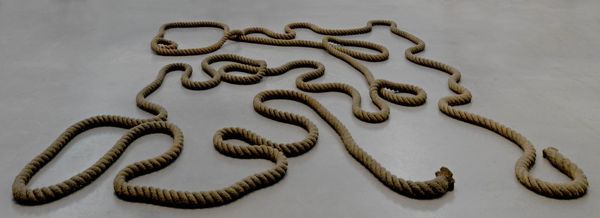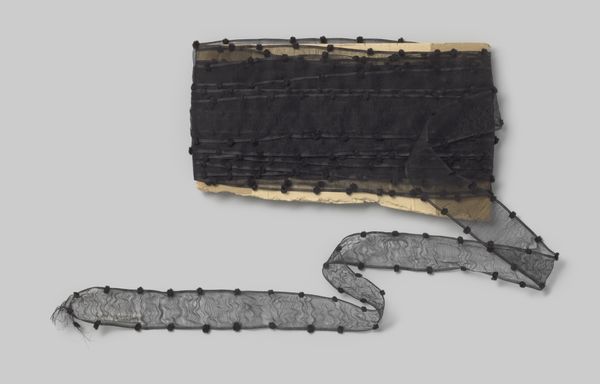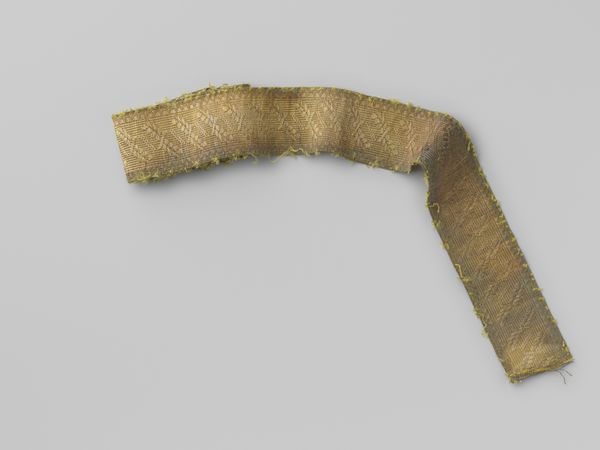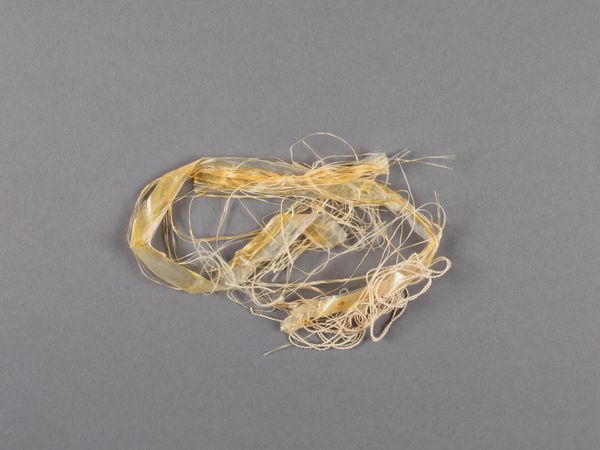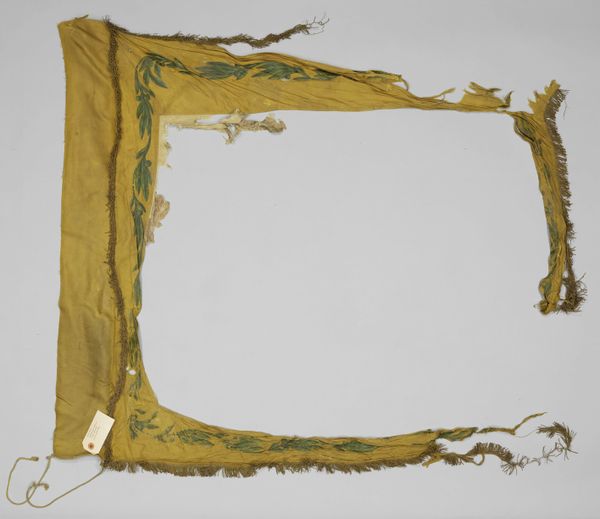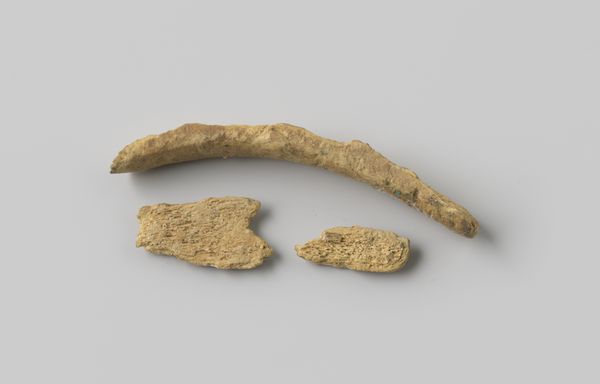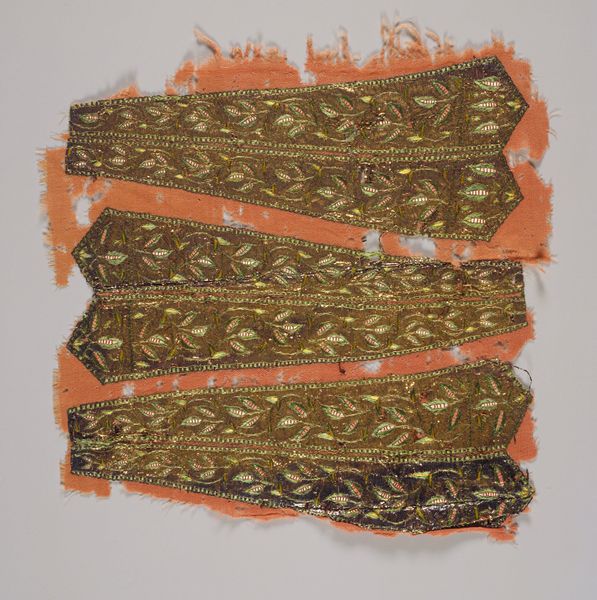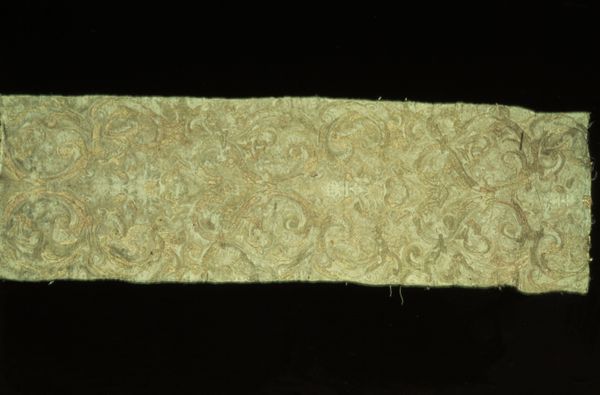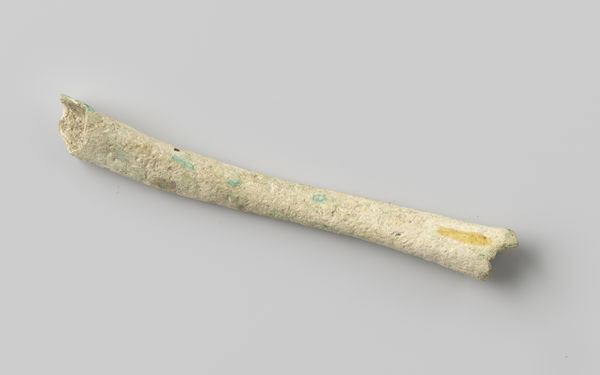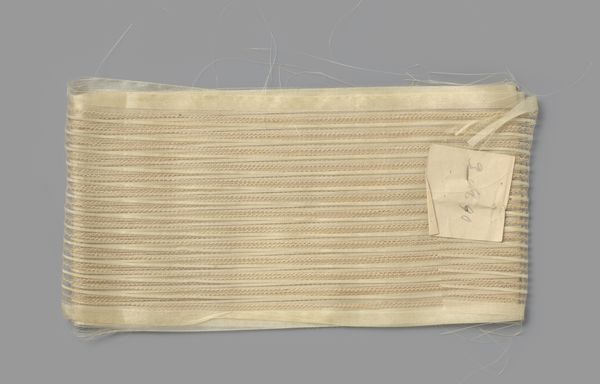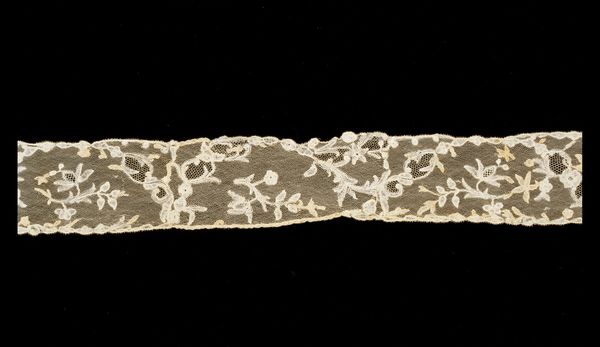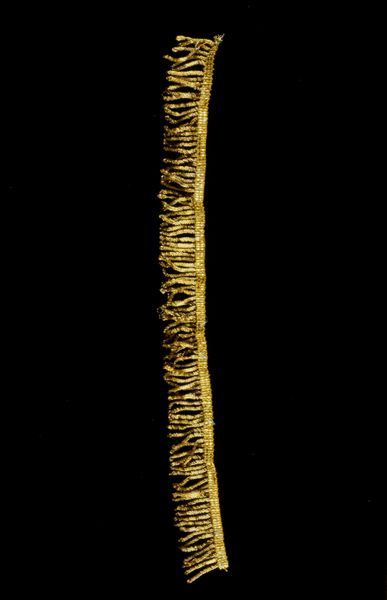
fibre-art, weaving, textile
#
fibre-art
#
decorative element
#
baroque
#
dutch-golden-age
#
weaving
#
textile
#
hand-embroidered
#
line
#
decorative-art
Dimensions: length 260 cm, width 5 cm, length 20 cm, width 7 cm, length 16 cm, width 16.5 cm
Copyright: Rijks Museum: Open Domain
Curator: My first thought: Luxurious restraint. The material looks incredibly soft, yet the colour whispers rather than shouts. Editor: Here we have what remains of a pillow cover: a green woolen fringe, woven sometime around 1657. It comes to us from the collection of A. Lepelaar. Curator: Restraint? Perhaps. I see something more feral in that texture. Like tufts of some unknown animal. What would green wool signify in domestic Baroque imagery? Renewal, certainly, nature… but the texture unsettles that a bit. Editor: Well, domesticity during the Dutch Golden Age wasn’t necessarily demure. The booming merchant class displayed its wealth openly, even within the supposed modesty of the home. Something like this fringe broadcasts quality and affluence. Wool wasn’t cheap. Green dyes could be particularly costly. This wouldn’t have been a peasant’s pillow. Curator: Right, the performance of prosperity. Beyond simple decoration, do you think the texture served a function? Perhaps signifying protection or fertility, something beyond just a financial showpiece? Maybe the choice of material itself served as some kind of apotropaic device for its owners. Editor: That’s certainly a compelling idea, reading the object through the lens of folklore. I'd wager that most viewers would perceive status far above symbolism in something like this today. Though, to your point, the ubiquity of protective emblems at the time would leave few objects unmarked by those beliefs. And green might also echo growth of family fortunes, literally and figuratively. Curator: Yes, and how interesting that just the fringe remains. It focuses our attention. What narratives did this textile hold then, both explicit in its form and perhaps unacknowledged even by its maker? And what narrative do we give it now? Editor: Good point! By isolating this element, are we granting the fringe a renewed cultural presence? An artwork where once it was a mere trimming.
Comments
No comments
Be the first to comment and join the conversation on the ultimate creative platform.
